Posters from Protests Against the Vietnam War on the 50th Anniversary of the War's End
Posters cared for by the Seaver Center for Western History Research Collection recall campus protests and national strife reverberating into our nation's struggles today
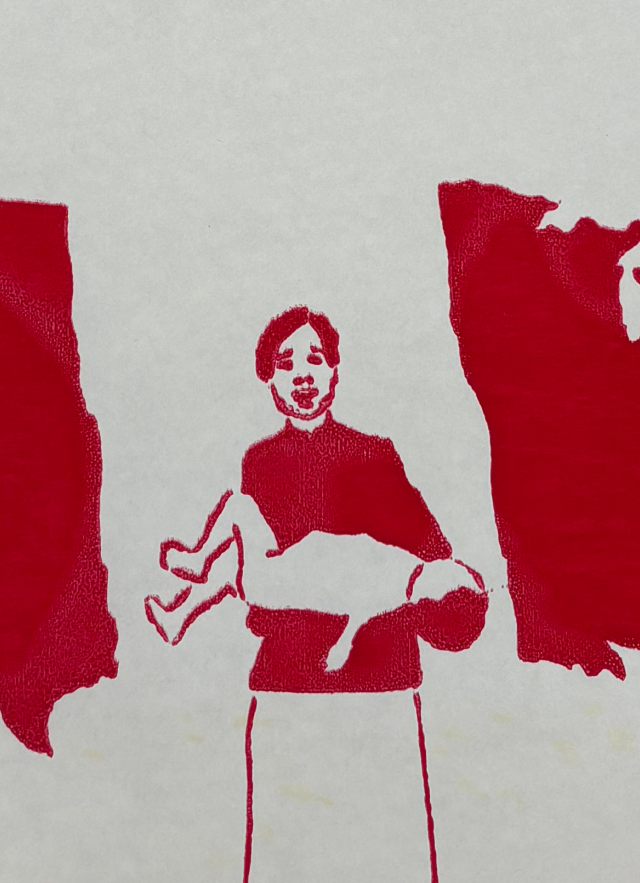
Published April 30, 2025
Fifty years ago today, on April 30, 1975, the Vietnam War officially ended two days after the Fall of Saigon.
Estimates of how many people died during the war vary due to the complexity and length of the 20-year conflict, which spilled over into neighboring Cambodia and Laos. Nearly 60,000 Americans were killed or went missing in action, their names recorded on the Vietnam Veterans Memorial in Washington, D.C. According to the U.S. military, between 200,000 and 250,000 South Vietnamese soldiers died in the war. A 1995 official estimate from the Vietnamese government claimed that more than a million North Vietnamese and Viet Cong fighters and as many as two million civilians on both sides were killed.
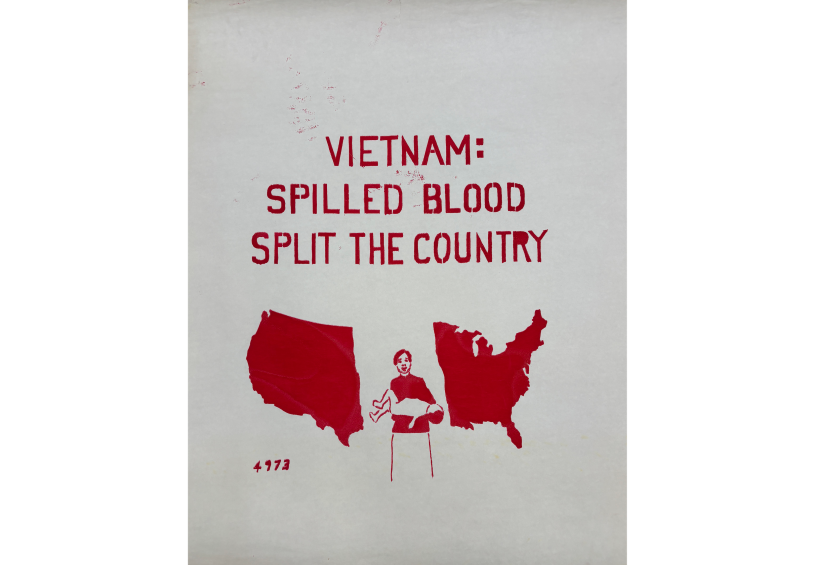
Ten years into the conflict, students at the University of California, Berkeley campus staged a series of protests against the war, culminating in the Vietnam Day march on November 21, 1965, the earliest mass demonstration against the Vietnam War in California. More than 10,000 people participated in the march through Oakland, one of many large-scale protests and direct actions that would sweep campuses across the country.
Among the collection of two-dimensional objects cared for in the Seaver Center are posters reflecting empathy for the victims of the war, along with cynicism and rage directed at the American government for its involvement. They represent just a facet of the shattering impact the war had on American culture, an impact that reverberates to campus protest movements today
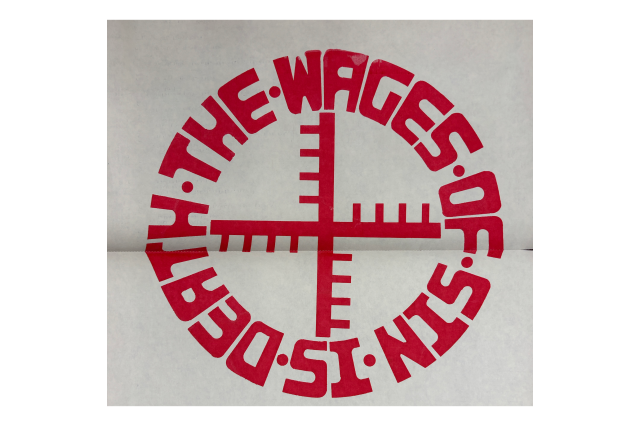
Courtesy of the Seaver Center for Western History Research
Evoking the cross hairs of a sniper rifle, this poster reads "The wages of sin is death." A quote from Romans 6:23, it highlights that many anti-war activists found inspiration for their beliefs in Christianity, while many of the loudest reactions in support of the war would come from white Evangelical Christians. It's the first half of a two-part poster.
stenciled print on dot-matrix printer paper
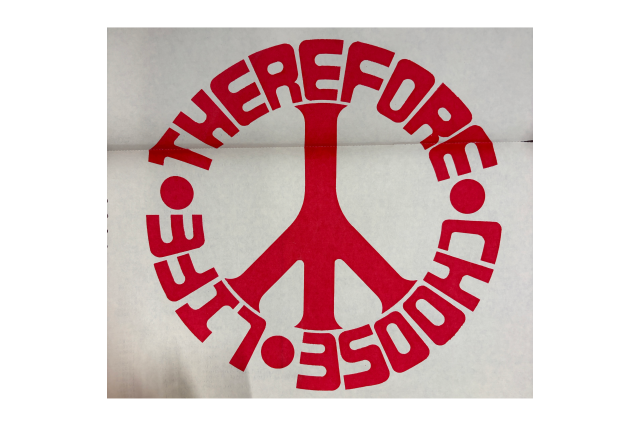
Courtesy of the Seaver Center for Western History Research
The second half reads, "Therefore choose life," shaped into a peace symbol. The slogan has been co-opted by anti-abortion activists in the ensuing 60 years.
stenciled print on dot-matrix printer paper
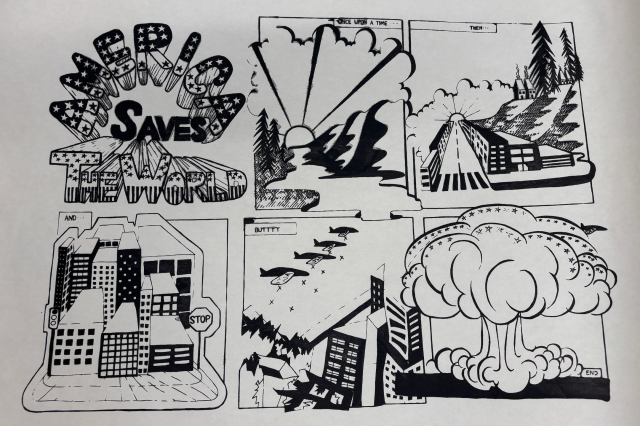
Courtesy of the Seaver Center for Western History Research
This sequential art protest poster incorporates comic book lettering and American stars and stripes to play with simplistic readings of international affairs as conflicts between good and evil.
stencil on poster paper
1 of 1
Evoking the cross hairs of a sniper rifle, this poster reads "The wages of sin is death." A quote from Romans 6:23, it highlights that many anti-war activists found inspiration for their beliefs in Christianity, while many of the loudest reactions in support of the war would come from white Evangelical Christians. It's the first half of a two-part poster.
stenciled print on dot-matrix printer paper
Courtesy of the Seaver Center for Western History Research
The second half reads, "Therefore choose life," shaped into a peace symbol. The slogan has been co-opted by anti-abortion activists in the ensuing 60 years.
stenciled print on dot-matrix printer paper
Courtesy of the Seaver Center for Western History Research
This sequential art protest poster incorporates comic book lettering and American stars and stripes to play with simplistic readings of international affairs as conflicts between good and evil.
stencil on poster paper
Courtesy of the Seaver Center for Western History Research
In Vietnam, the anniversary is celebrated as a great victory over the United States, but the Fall of Saigon ignited a refugee crisis in 1975. Many of the tens of thousands of Vietnamese fleeing the Communist regime arrived in Los Angeles. Their numbers would grow into the largest diaspora community of Vietnamese in the U.S. just 10 years later. For many of the diaspora, the events of 1975 are known as Black April, a day marked annually among the community in Southern California.